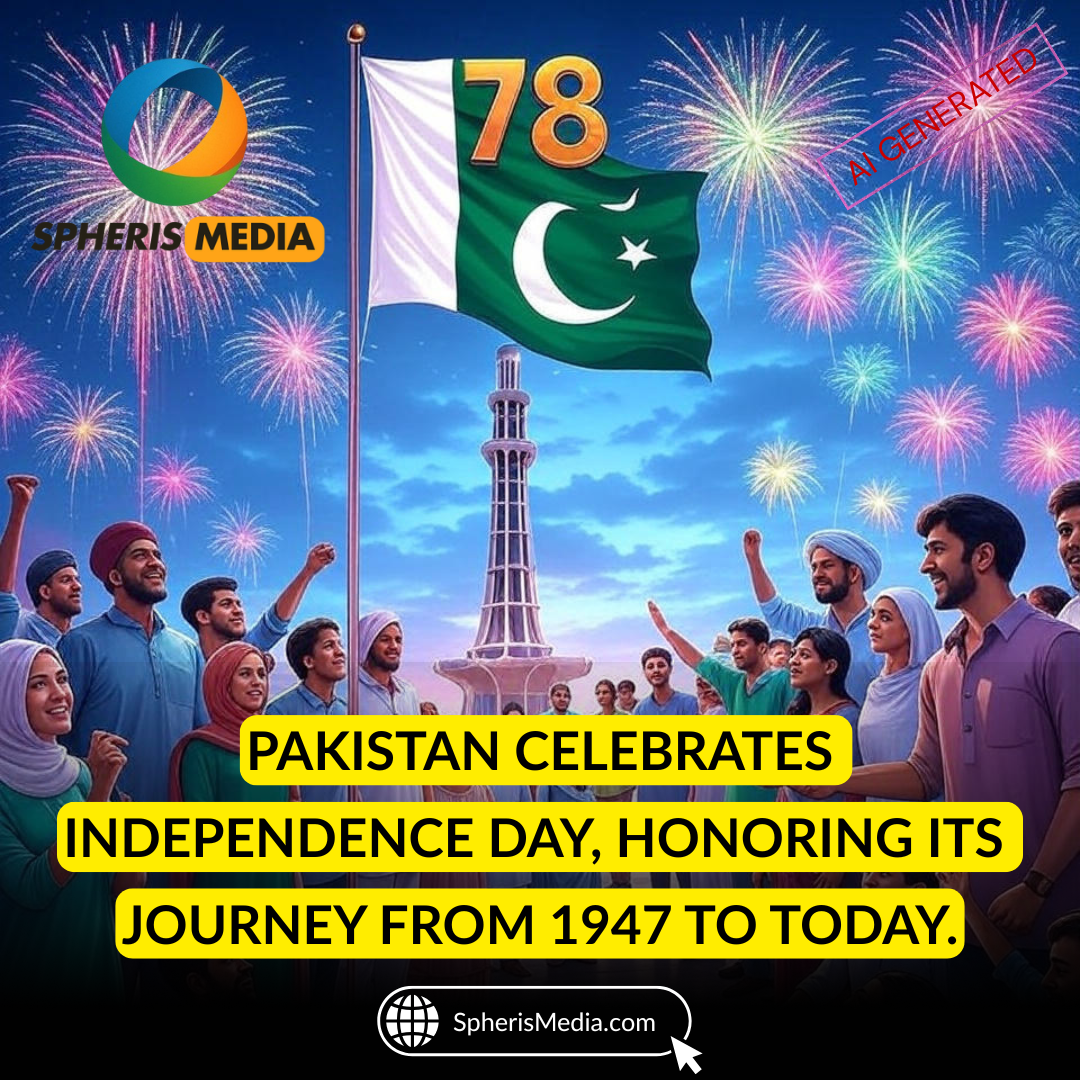Celebrating 78 Years of Pakistan’s Independence: A Nation’s Journey from 1947 to 2025
Introduction
On 14th August 2025, Pakistan proudly celebrates 78 years of independence. This day is more than a date on the calendar — it is a powerful reminder of our nation’s resilience, struggles, and achievements. From its birth in 1947, when Pakistan emerged as a sovereign state for Muslims of the subcontinent, to today’s growing economy and thriving cultural identity, the country’s journey has been filled with challenges, triumphs, and endless hope for a better tomorrow.
This blog takes you through the story of Pakistan — its creation, its defining moments, the hurdles it overcame, and the vision that continues to guide its people toward progress.
The Birth of a Nation (1947)
Pakistan’s independence on 14th August 1947 was the result of decades of political struggle and sacrifices led by visionary leaders like Quaid-e-Azam Muhammad Ali Jinnah and Allama Iqbal. The creation of Pakistan was based on the principle of providing Muslims a homeland where they could freely practice their religion, preserve their cultural heritage, and shape their destiny.
However, the birth of the nation came at a cost — millions were displaced during the partition, and the young country faced the immediate challenge of establishing governance, infrastructure, and economic stability.
Early Challenges and Resilience (1947–1970s)
The early years tested Pakistan’s resilience. From refugee crises and administrative struggles to the need for a functioning economy, the country faced daunting tasks. The construction of Karachi as the first capital, the establishment of national institutions, and the drafting of constitutions were milestones during this formative period.
Despite internal and external challenges, Pakistan saw progress in education, agriculture, and industrial growth during the 1960s. Land reforms, irrigation projects, and industrialization initiatives set the stage for modernization.
Political Struggles and National Resilience (1970s–1990s)
The 1970s brought political upheavals, including the separation of East Pakistan, which became Bangladesh in 1971. This period tested the unity of the remaining nation, but Pakistan rebuilt its identity through constitutional reforms, the strengthening of democratic institutions, and national projects.
During the 1980s and 1990s, Pakistan navigated regional conflicts, economic fluctuations, and shifts in governance. Yet, the spirit of the people remained unbroken, with cultural pride and patriotism acting as unifying forces.
Economic and Social Progress (2000–2025)
Entering the 21st century, Pakistan faced globalization, rapid technological changes, and shifting geopolitical landscapes. Despite challenges like political instability and economic crises, Pakistan made notable advancements:
Infrastructure Growth: Mega projects like motorways, CPEC (China-Pakistan Economic Corridor), and energy sector reforms.
Technology and Innovation: The rise of Pakistan’s IT industry, freelancing economy, and digital startups.
Education and Empowerment: Increased literacy rates, scholarships, and educational reforms.
Sports and Culture: International cricket victories, global recognition of Pakistani art, and a booming fashion industry.
Today, Pakistan stands as a youthful nation, with over 60% of its population under the age of 30 — a demographic that holds the potential to shape the country’s future.
National Symbols and Their Meaning
The Flag: Green symbolizes Islam and the Muslim majority, while white represents minorities and peace. The crescent stands for progress, and the star for light and knowledge.
The National Anthem: A tribute to the country’s faith, unity, and patriotism.
Monuments: Minar-e-Pakistan, Badshahi Mosque, Faisal Mosque, and Pakistan Monument — all embody historical pride.
The Spirit of Independence Day
Every 14th August, Pakistanis across the globe celebrate with enthusiasm — streets are decorated in green and white, national songs echo in the air, and people proudly wave the flag. The day begins with prayers for the nation’s prosperity, followed by flag-hoisting ceremonies, cultural events, parades, and fireworks.
Independence Day is not just about celebrations; it is a reminder of the responsibility we carry to protect and strengthen our homeland.
Vision for the Future
As Pakistan marks 78 years, the path ahead is filled with both opportunities and challenges. Key goals for the future include:
Strengthening democratic institutions and governance.
Expanding economic opportunities through technology, exports, and entrepreneurship.
Ensuring quality education for all.
Promoting unity across diverse cultures and ethnicities.
Building a strong global presence while preserving national identity.
The dream of a prosperous, peaceful, and progressive Pakistan can only be achieved through collective effort and dedication.
Conclusion
From its birth in 1947 to its current position in 2025, Pakistan’s journey is a testament to the resilience, strength, and unity of its people. The road has not been without challenges, but each hurdle has only made the nation stronger.
On this 14th August, let us not only celebrate the past but also commit to shaping a future worthy of the sacrifices that built this homeland. Together, we can ensure that the next chapters in Pakistan’s history are filled with progress, peace, and pride.
Pakistan Zindabad!
